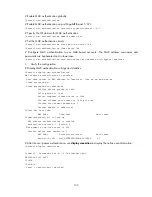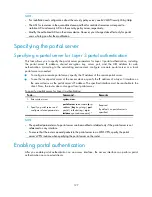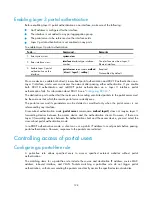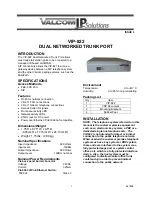
120
traffic from a user in the Auth-Fail VLAN during a specified period of time (90 seconds by default), it
removes the user from the Auth-Fail VLAN and adds the user to the initial VLAN of the port.
NOTE:
After a user is added to the authorized VLAN or Auth-Fail VLAN, the IP address of the client needs to
be automatically or manually updated to ensure that the client can communicate with the hosts in the
VLAN.
Assignment of authorized ACLs
The device can use ACLs to control user access to network resources and limit user access rights. With
authorized ACLs specified on the authentication server, when a user passes authentication, the
authentication server assigns an authorized ACL for the user, and the device filters traffic from the user
on the access port according to the authorized ACL. You must configure the authorized ACLs on the
access device if you specify authorized ACLs on the authentication server. To change the access right of
a user, specify a different authorized ACL on the authentication server, or change the rules of the
corresponding authorized ACL on the device.
Layer 3 portal authentication process
Direct authentication and cross-subnet authentication share the same authentication process, while re-
DHCP authentication has a different process because of the presence of two address allocation
procedures.
Direct authentication/cross-subnet authentication process (with CHAP/PAP authentication)
Figure 46
Direct authentication/cross-subnet authentication process
Authentication/
accounting server
Authentication
client
Portal server
Access
device
1) Initiate a connection
2) CHAP authentication
3) Authentication request
5) Authentication reply
4) RADIUS
authentication
6) Notify login
success
7) Authentication reply
acknowledgment
9) Authorization
8) Security check
Security
policy server
Timer
Direct authentication/cross-subnet authentication works as follows:
1.
An authentication client initiates authentication by sending an HTTP request. When the HTTP packet
arrives at the access device, the access device allows it to pass if it is destined for the portal server
or a predefined free website or redirects it to the portal server if it is destined for other websites.
The portal server pushes a web authentication page to the user, and the user enters the username
and password.
2.
The portal server and the access device exchange CHAP messages. For PAP authentication, this
step is skipped.
















































